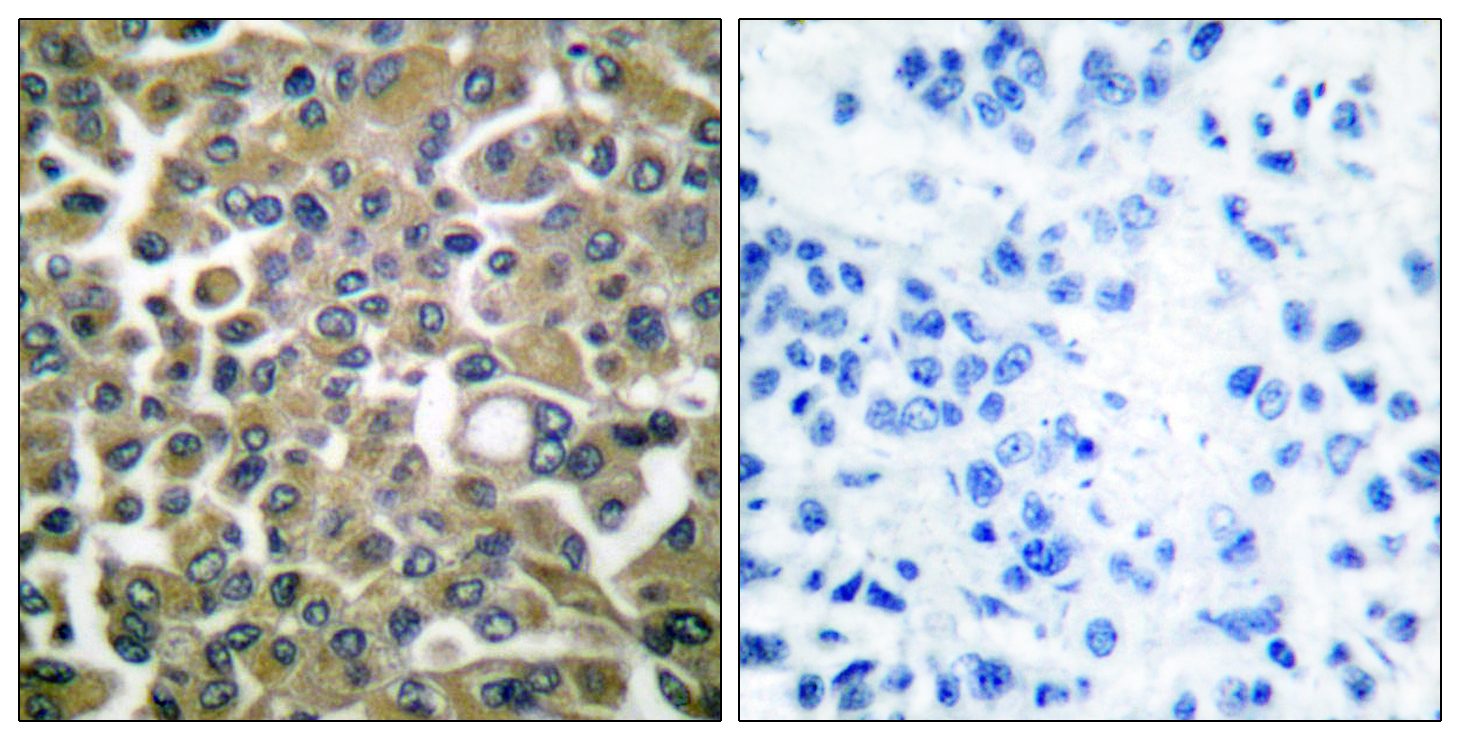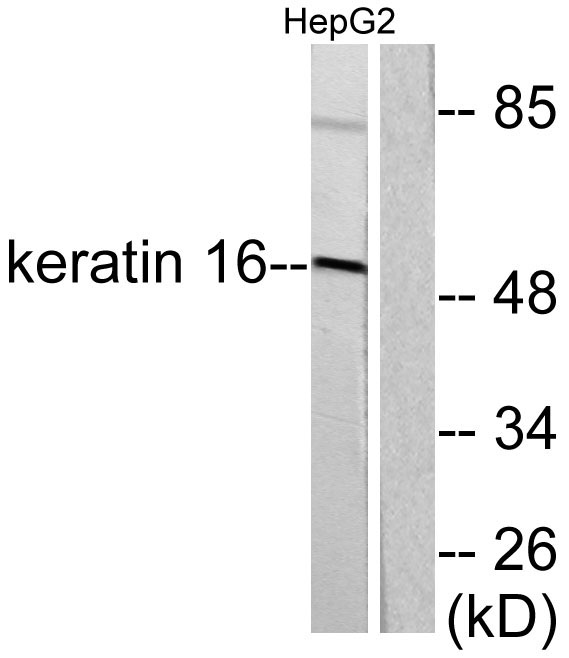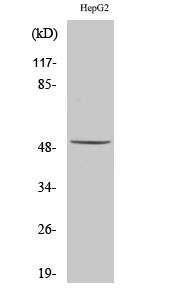产品名称
Cytokeratin 16 Rabbit Polyclonal Antibody
别名
KRT16; KRT16A; Keratin; type I cytoskeletal 16; Cytokeratin-16; CK-16; Keratin-16; K16
蛋白名称
Keratin type I cytoskeletal 16
存储缓冲液
Liquid in PBS containing 50% glycerol, 0.5% BSA and 0.02% New type preservative N.
Human Gene Link
http://www.ncbi.nlm.nih.gov/sites/entrez?db=gene&term=3868
Human Swissprot No.
P08779
Human Swissprot Link
http://www.uniprot.org/uniprotkb/P08779/entry
Mouse Gene Link
http://www.ncbi.nlm.nih.gov/sites/entrez?db=gene&term=16666
Mouse Swissprot No.
Q9Z2K1
Mouse Swissprot Link
http://www.uniprot.org/uniprot/Q9Z2K1
免疫原
The antiserum was produced against synthesized peptide derived from human Keratin 16. AA range:421-470
特异性
Cytokeratin 16 Polyclonal Antibody detects endogenous levels of Cytokeratin 16 protein.
稀释度
WB 1:500 - 1:2000. IHC 1:100 - 1:300. ELISA: 1:10000.. IF 1:50-200
宿主
Polyclonal, Rabbit,IgG
背景介绍
The protein encoded by this gene is a member of the keratin gene family. The keratins are intermediate filament proteins responsible for the structural integrity of epithelial cells and are subdivided into cytokeratins and hair keratins. Most of the type I cytokeratins consist of acidic proteins which are arranged in pairs of heterotypic keratin chains and are clustered in a region of chromosome 17q12-q21. This keratin has been coexpressed with keratin 14 in a number of epithelial tissues, including esophagus, tongue, and hair follicles. Mutations in this gene are associated with type 1 pachyonychia congenita, non-epidermolytic palmoplantar keratoderma and unilateral palmoplantar verrucous nevus. [provided by RefSeq, Jul 2008],
组织表达
Expressed in the corneal epithelium (at protein level).
细胞定位
nucleus,cytoskeleton,intermediate filament,extracellular exosome,
功能
disease:Defects in KRT16 are a cause of pachyonychia congenita type 1 (PC1) [MIM:167200]; also known as Jadassohn-Lewandowsky syndrome. PC1 is an autosomal dominant ectodermal dysplasia characterized by hypertrophic nail dystrophy resulting in onchyogryposis (thickening and increase in curvature of the nail), palmoplantar keratoderma, follicular hyperkeratosis, and oral leukokeratosis. Hyperhidrosis of the hands and feet is usually present.,disease:Defects in KRT16 are a cause of unilateral palmoplantar verrucous nevus (UPVN) [MIM:144200]. UPVN is characterized by a localized thickening of the skin in parts of the right palm and the right sole.,disease:Defects in KRT16 are the cause of palmoplantar keratoderma non-epidermolytic (NEPPK) [MIM:600962]. NEPKK is a dermatological disorder characterized by focal palmoplantar keratoderma with oral, genital, and follicular lesions.,disease:KRT16 and KRT17 are coexpressed only in pathological situations such as metaplasias and carcinomas of the uterine cervix and in psoriasis vulgaris.,mass spectrometry: PubMed:11840567,miscellaneous:There are two types of cytoskeletal and microfibrillar keratin, I (acidic) and II (neutral to basic) (40-55 and 56-70 kDa, respectively).,similarity:Belongs to the intermediate filament family.,subunit:Heterodimer of a type I and a type II keratin. KRT16 associates with KRT6 isomers. Interacts with TCHP. Interacts with TRADD.,tissue specificity:Expressed in the hair follicle, nail bed and in mucosal stratified squamous epithelia and, suprabasally, in oral epithelium and palmoplantar epidermis. Also found in luminal cells of sweat and mammary gland ducts.,
纯化
The antibody was affinity-purified from rabbit antiserum by affinity-chromatography using epitope-specific immunogen.



